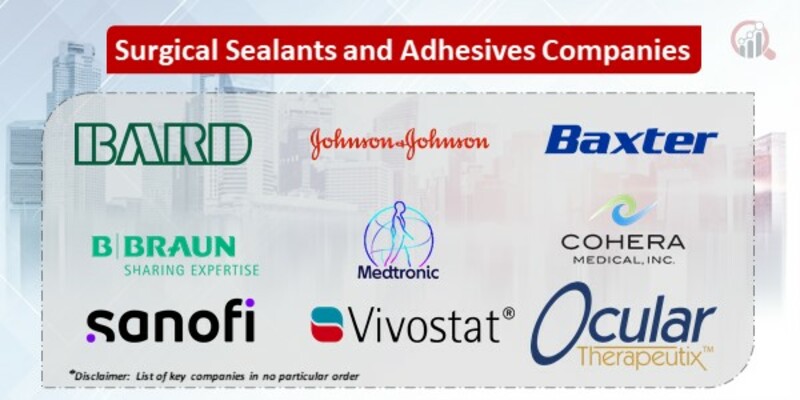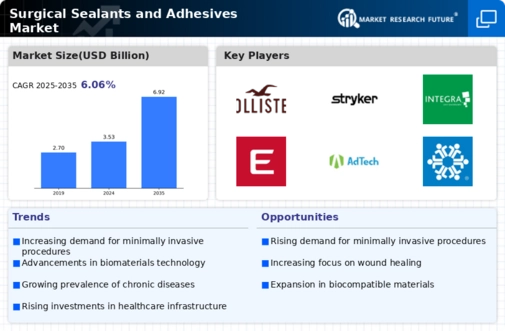Top Industry Leaders in the Surgical Sealants and Adhesives Market

Latest Surgical Sealants and Adhesives Companies Updates:
Johnson & Johnson's EthiconAcquisition of Acelity's KCI portfolio: This strategic move bolsters J&J's presence in the wound care and surgical sealant market, particularly with products like STAFLOK™ Natural Hemostatic Sealant (shown below).Focus on innovation: J&J continues to invest in R&D, with recent developments like a self-healing tissue adhesive in the pipeline.
MedtronicStrong financial performance: Medtronic's surgical sealant and adhesive segment saw a 6% growth in Q3 2023, driven by robust demand for products like Evicel™.Expansion into emerging markets: Medtronic is focusing on increasing its presence in high-growth regions like China and India.
Baxter InternationalFocus on natural and bioabsorbable sealants: Baxter's FloSeal® Hemostatic Matrix is gaining traction due to its ease of use and minimal tissue reaction.Challenges: Baxter faced recent recalls and regulatory actions related to some of its surgical sealants, highlighting the importance of quality control in this critical market.
LiquiBand GmbHInnovative cyanoacrylate adhesives: LiquiBand's products offer fast bonding times and strong tissue adhesion, making them suitable for various surgical applications.Partnerships: LiquiBand is actively collaborating with universities and research institutions to develop next-generation sealants and adhesives.
List of Surgical Sealants and Adhesives Key companies in the market:
- R. Bard, Inc. (US)
- Johnson & Johnson (UK)
- Baxter International, Inc. (US)
- Medtronic plc (US)
- B. Braun Melsungen AG (Germany)
- Cohera Medical, Inc. (US)
- Sanofi Group (France)
- Sealantis, Ltd (Israel)
- Vivostat A/S (Denmark)

